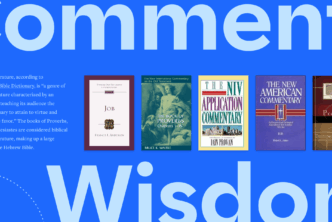Though an unlikely recipient of God’s grace, Naaman the Syrian experienced the mercy and power of God in his healing from leprosy. Naaman’s response to Elisha’s healing is both remarkable and puzzling. It is remarkable that this worshiper of the god Rimmon gave glory to the God of Israel for his physical restoration, honoring him as the only God “in all the earth” (2 Kgs 5:15). Yet his follow-up request to Elisha is puzzling:
Please let there be given to your servant two mule loads of earth, for from now on your servant will not offer burnt offering or sacrifice to any god but the LORD. In this matter may the LORD pardon your servant: when my master goes into the house of Rimmon to worship there, leaning on my arm, and I bow myself in the house of Rimmon, when I bow myself in the house of Rimmon, the LORD pardon your servant in this matter. (2 Kgs 5:17–18)
Perhaps even more perplexing is Elisha’s response: “Go in peace” (2 Kgs 5:19).
What are we to make of this strange turn of events? Was Elisha largely approving of Naaman, acting gently toward a new, if naive, convert? Looking at how some past theologians have read the passage gives us different perspectives on the episode.
Some historical understandings
In considering Elisha’s response, “Go in peace,” Jonathan Edwards argued that this short, perhaps even curt response didn’t imply Elisha’s approval. It signified “no more than that he bid him farewell.” As for Naaman’s plan to take Israel’s earth so he could worship on it, Elisha “takes no notice of it, intimating that he looked on his pretences [as] not worthy of any regard.” Seeking parallels in Scripture, Edwards drew this conclusion:
God herein dealt with Naaman, as he commonly does with such hypocrites that pretend to be his servants, but are joined to idols. Hos. iv. 17. “Ephraim is joined to idols, let him alone” (cf. Matt. 15:14).
Others, feeling the weight of the word “peace” and the sense that Elisha and Naaman separated on friendly terms, have considered how Elisha’s statement could be taken as approval. Matthew Poole argued that Elisha “at present accepts of his profession of the true, and his renunciation of the false religion.” Poole speculated that Elisha “might take another and a more convenient time to inform him” about “the lawfulness or sinfulness of that action”—and in fact, we know that Elisha did go to Syria later on (2 Kgs 8:7).
John Calvin, comparing Naaman to Cornelius in Acts 10, saw genuine faith. While Naaman does not appear to receive the full understanding of the Messiah when discoursing with Elisha, “yet he is commended for his piety.” As with the Roman heathen Cornelius, whose “alms and prayers were acceptable to God (Acts 10:31),” so “the prophet by his answer approved of the sacrifices of Naaman. In both, this must have been the result of faith.”1
Bible interpretation takeaways
One thing we learn from reading older theologians is the impulse to seek clues both in the immediate story’s context and in resonant themes throughout Scripture. Edwards saw parallels between how Elisha deals with Naaman and how God deals with hypocrites in Hosea and Matthew. Poole noted the near-contextual clue that Elisha did go to Syria later (though Naaman isn’t mentioned there). And Calvin observed a similarity between Naaman and Cornelius. When interpreters make these connections within the biblical text, their arguments are more compelling. Such approaches may not settle an interpretive difficulty (even these interpreters don’t agree entirely), but they point us toward fruitful lines of consideration.
Also, none of these theologians gave Naaman a complete pass for his plan for worshiping the God of Israel in his home country. Edwards was obviously more suspicious of Naaman’s motives. Still, Poole and Calvin praised him for his beginnings of piety and genuine faith while recognizing the need for further growth. So while some have taken this passage as allowing people to worship the Christian God secretly in challenging contexts, these theologians were instead asking a different question, looking in the text for clues either to decipher a possible example of hypocrisy or to explain Naaman’s faith as mere beginnings, not final arrivals at mature belief.
Reading older biblical interpreters helps us consider the nuances of Scripture—and not skip over small details. Most important, they point us back to the biblical text for clues both in the near context and in the canonical context to reach persuasive conclusions.
Related resources

A Journey to Wholeness: The Gospel according to Naaman’s Slave Girl (Gospel according to the Old Testament)
Regular price: $10.99








